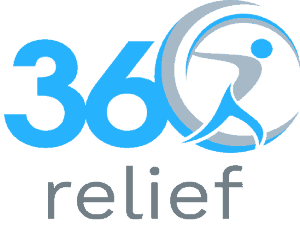
Make This Christmas Pain-Free: 10% Off on Supportive Wear!
Holidays are coming, which means that let’s welcome them with joy, laughter, and, of course, some comfort! At 360 Relief,

Table of Contents
ToggleSilverstone Classic is a three-day car and racing event held annually at the Silverstone Circuit in Northamptonshire, England. The event features a number of historic race cars in approximately 20 races. The overall event comprises a display from over 100 car clubs with over 10,000 classic cars, interactive activities, dynamic demonstrations, free access to the grandstands and paddocks, a shopping village, live music on Friday and Saturday evenings, and lots more. Inaugurated in 1990, the Silverstone Classic was one of the first motorsports meetings and events. The classic celebrated its 30th anniversary in 2020. The Silverstone Classic 2022 event is going to be held between August 26th and 28th, 2022.
No doubt, car racing is a wonderful game or sport. People who love driving car racing, especially classic cars, love participating in the event. As well as this, people who are not drivers love to watch this live event. However, there are many factors that make the game or sport dangerous. For example, overspeeding and colliding with others on the track can cause several injuries to drivers and even death in severe cases. Here we come with possible injuries found in car racing, along with their possible treatments. As well as this, you can also get potential safety essentials suggested by experts, helping you get a safe car racing experience. So, lets’ start here;
The below-given are the most common injuries found in car racing professionals. You need to know the major causes causing injuries, helping you avoid the chances of injuries. as well as this, we have also mentioned the possible treatments of these injuries, helping you get a speedy recovery:
The most common injury that car racing professionals get is a fracture of the upper extremity. Many drivers fracture their shoulder and arms, resulting from minor crashes. Distal radius fracture and scaphoid fracture are common among them. Both of these bones (distal radius and scaphoid) are located in or around the wrists. Experts suggest a common tip of not locking your arms or elbows on the steering wheel, allowing you to avoid arm fractures.
Usually, the fracture is treated by immobilising the broken bone with plaster or cast. However, surgery is also performed to insert metal rods or plates to hold the fractured bone pieces together. Moreover, some complicated cases may require surgery or surgical traction. Wearing arm sling support & brace for fractures or dislocated arm helps support your arm, promoting healing.

The second most common injury among car race professionals is lower back strain. The most common cause of lower back strain is small crash; however, strenuous activities during driving is another reason. Lower back strain is referred to the little tears in the ligaments and muscles in and around your lower back. Experts suggest stretching exercises and staying loose during driving, helping reduce the chances of lower back injuries.
Experts suggest several ways to help ease pain and reduce other symptoms of lower back strain. These treatment plans include icing your back, applying heat to the affected areas taking painkillers, getting physical therapy, and maintaining a good posture. As well as this, providing proper support and needed compression also helps minimise the symptoms of lower back strain. You can wear the adjustable lower back support braces and belt for pain relief, helping you reduce pain and other discomforts.

Tendinitis is another most common injury drivers may get in different parts of their bodies during or after a race. Tendinitis is an inflammation of tendons resulting in pain, stiffness, and other discomforts. Gripping the steering wheels with excessive force can put a lot of strain on the tendons of hands, wrists, arms, shoulders, and necks. As well as this, the force drivers put on the break pedals can also cause tendinitis in their feet, ankles, and knees.
Treatments for tendinitis include rest, ice massage, pain relievers, and wearing supportive garments. Taking proper rest helps reduce the chances of further damage. Icing the affected areas helps reduce inflammation or swelling. However, taking pain relievers helps reduce pain and other discomforts. Moreover, wearing supportive garments helps speed up the recovery process. For example, wearing neoprene ankle support braces for tendonitis help reduce pain and other symptoms of tendinitis, promoting healing.

Plantar fasciitis is known as an inflammation of the plantar fasciitis bands – thick bands that run from the calves down to your feet. Plantar fasciitis occurs due to repetitive movements of the plantar fascia, especially while pushing down your feet on a gas pedal during a race.
Experts suggest stretching, physical, and shockwave therapies to treat plantar fasciitis. However, icing, medication, and proper rest also help you speed up recovery. Wearing stretchable ankle support wraps helps reduce the symptoms of plantar fasciitis.

A concussion is a traumatic injury related to the brain that happens when a bump, jolt, or blow occurs to the head. Accidentally falling that causes your head to move rapidly in the back and forth movement can also cause a concussion.
The common but effective treatment plan for concussion is to take plenty of rest. However, your healthcare advisor will also suggest you avoid participating in physical activities and recommend some medications to help speed up recovery.
The following are the best safety essentials, suggested by experts, to help get a safe car racing experience:

Holidays are coming, which means that let’s welcome them with joy, laughter, and, of course, some comfort! At 360 Relief,

Happy Cyber Monday to everyone; it is a perfect occasion for 360 Relief to offer a special discount of 10%

This Black Friday, take advantage of exclusive 10% savings on some of 360 Relief’s best-selling compression socks and support braces!

Everyday life includes walking up stairs, but knee discomfort can make this basic activity difficult. Walking up or down stairs

Cooking is a beloved activity for many, but for those struggling with knee pain, standing in the kitchen can quickly

We’ve all been there. On a ride in a car, for instance, to the country home for a weekend break

Gardening is enjoyable for many people and those who like tending to their lawns and plants usually find it therapeutic

Do you have a painful knee problem that takes you to physiotherapy…for an injury that hampers your daily living…your workout

Training can be very much associated with some pains and injuries that may be experienced by the trainers. As there

Office workers often spend hours seated at their desks, focusing on tasks while unknowingly putting their health at risk. The

Winter often brings more than just a change in weather; for many, it also means dealing with unexpected swelling in

Compression socks have become a critical tool for athletes across all sports. Whether you’re a marathon runner, cyclist, or weightlifter,

October marks the beginning of National Cholesterol Month in the UK, a time dedicated to raising awareness about cholesterol and

Overall, there is nothing to match the experience of watching musicians perform live in an outdoor concert in Glastonbury. However,

Today charity runs have gained popularity as a way of raising cash for a cause in the United Kingdom. From
Please enter your email to subscribe to our newsletter for exclusive offers and updates
Copyright © 2025 | 360 Relief Ltd | Sitemap

